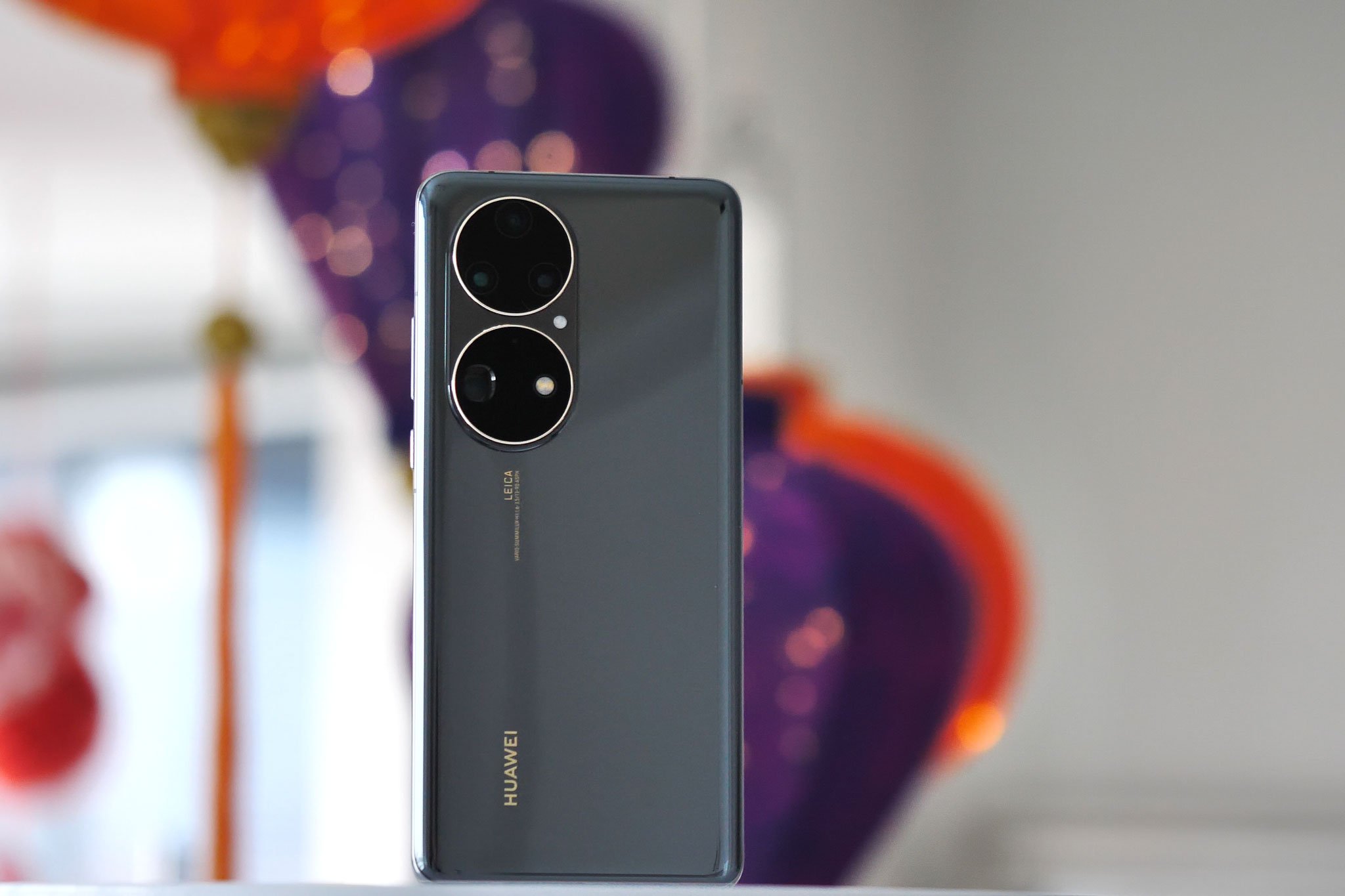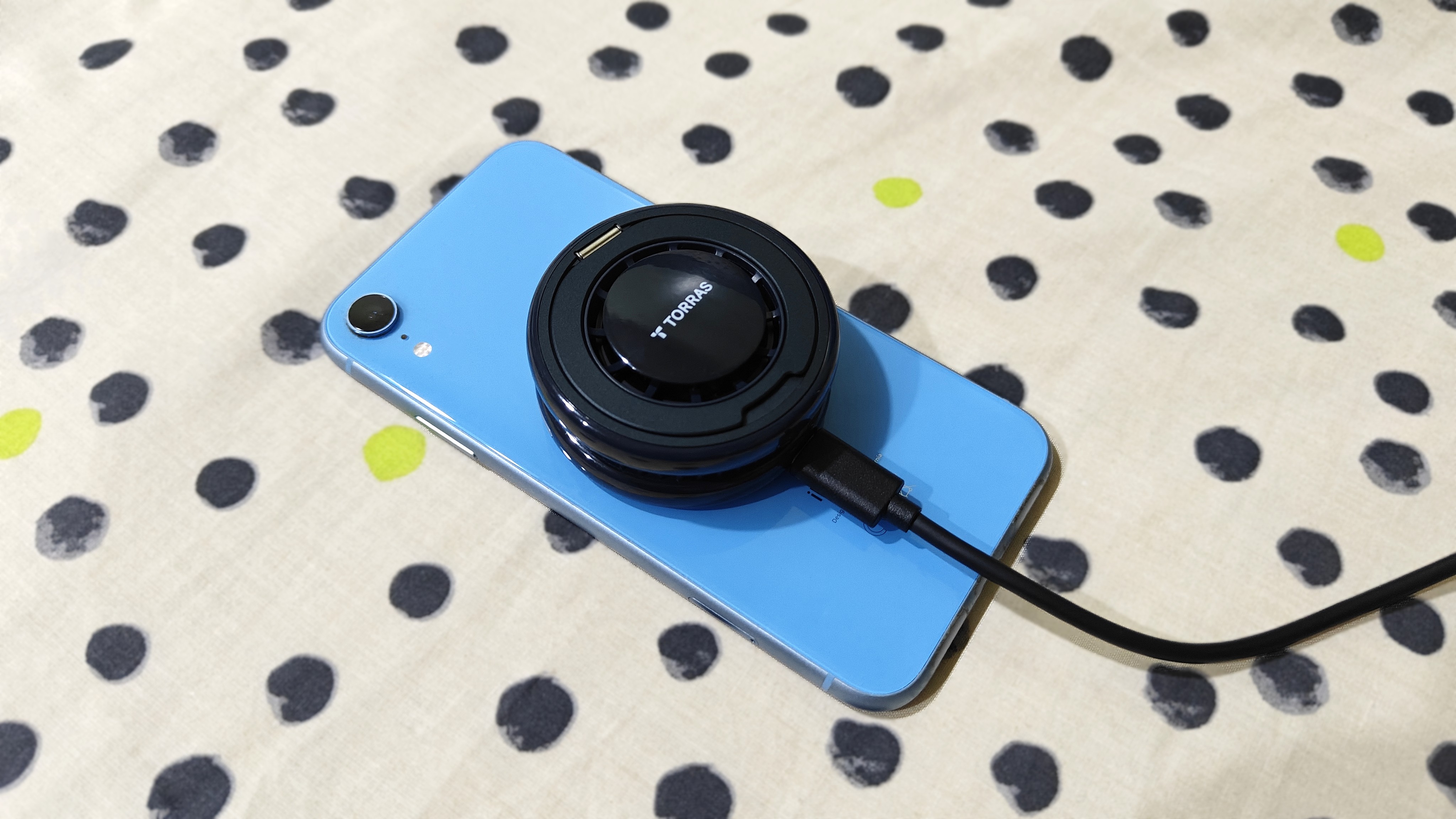Android Central Verdict
Bottom line: As usual, Huawei excels at industrial design and photography — as well as the software experience if you own other Huawei gear. But the P50 Pro's high price make it a tough sell considering its year-old 4G platform.
Pros
- +
Slick design, solid construction
- +
Impressive multitasking + multi-device features
- +
Superb photography and video capabilities
Cons
- -
Year-old SoC with no 5G
- -
Very high starting price
- -
Lack of GMS support still a headache
Why you can trust Android Central
It's been a rough few years for Huawei, but the Chinese brand is back in 2022 with the first P-series flagship in what seems like an eternity. Having launched in China with 5G support in late 2021, the 4G-flavored Huawei P50 Pro arrives in Europe almost two years after its predecessor, the P40 Pro.
Like the P40, it's focused on photography — with some genuinely fantastic camera hardware and impressive processing tricks, just as we've come to expect from this series. And once again, there's still no Google software — Huawei remains subject to U.S. sanctions limiting its ability to do business with some American companies. What's more, that sticky situation means there are some technical trade-offs that we haven't previously seen in a flagship Huawei phone.
Most notably, this is a 4G phone. It runs the 4G version of Qualcomm's Snapdragon 888, the chip giant's 2021 offering. That's not a huge deal in terms of day-to-day use in 2022, but it's undeniably less future-proof in that respect than many of the best Android phones.
So is the P50 Pro worth it? Well, as usual, it's complicated.
Huawei P50 Pro: Price and availability
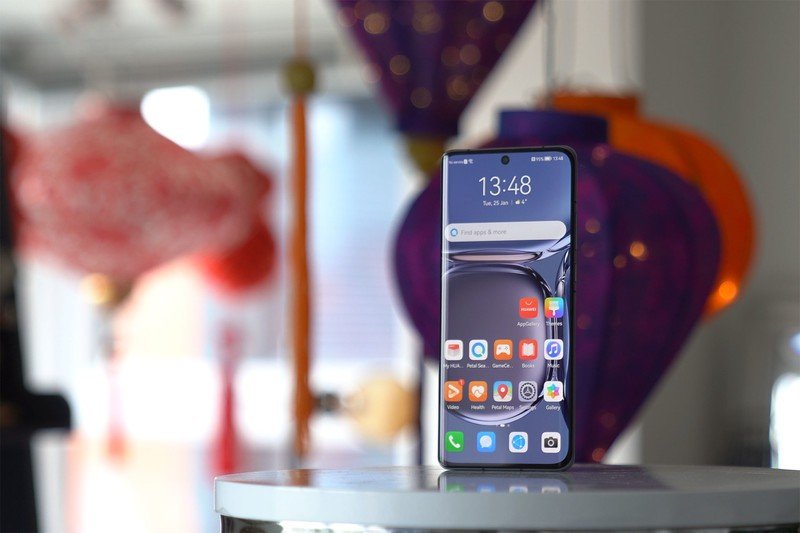
The Huawei P50 Pro is available in China as a 5G handset, powered by Huawei's own Kirin 9000 5G platform, for the equivalent of around US$1,000.
The Snapdragon-powered 4G variant we're reviewing will be sold in other Asian countries, as well as Europe and the Middle East. Huawei's website lists the phone as available to buy in the Czech Republic, Germany, Netherlands, Poland, Portugal, Romania, Russia, Saudi Arabia, Philippines and Thailand. The UK will join that list on March 22.
In Europe it'll set you back €1,199 including VAT. In the UK, it's £1,099.
We're not aware of any carriers offering subsidized on-contract plans with this phone, so purchasing directly from the manufacturer would seem to be your best option. Huawei offers trade-in deals on older handsets that'll let you knock up to €150 off the price of a new P50 Pro, plus additional discounts on cases, fitness bands and audio gear if you buy them together with the phone. Zero-percent financing is also available in some European countries, bringing the cost to just under €100 per month for 12 months.
Huawei P50 Pro: What you'll like
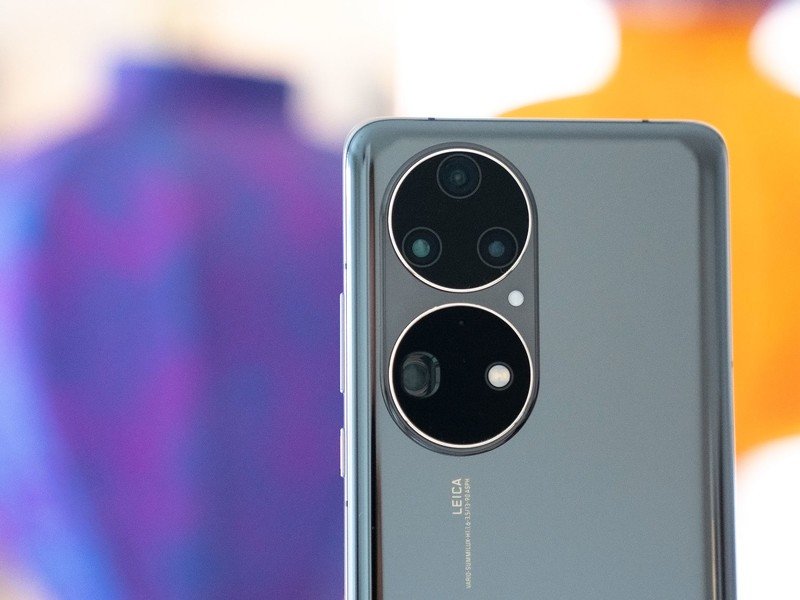
Huawei still knows how to make a premium smartphone that looks and feels great.
The basic design of its latest model hasn't changed a whole lot compared to the P40 — at least from the front and the sides. The P50 features familiar squared-off top and bottom edges and svelte side walls, plus a stylized red-accented power key for a little bit of extra flair. These top and bottom borders also house this phone's stereo speakers, which provide ample loudness and bass without distortion.
Elsewhere, there's a solid list of specs that includes a fantastically smooth 120Hz display — a curved panel at Full HD+ — along with conveniences like in-screen fingerprint and IP68 water resistance. While the P50 can't match the Quad HD+ clarity of some rivals, I haven't particularly noticed the difference, especially with this screen's excellent daylight visibility and bright colors. What's more, with a 6.6-inch display diagonal it's large enough for comfortable app use without being at all unwieldy.
| Category | Huawei P50 Pro |
|---|---|
| Operating System | EMUI 12 (Android 11) |
| Chipset | Snapdragon 888 4G |
| Display size | 6.6-inch Full HD+ 120Hz AMOLED |
| Memory | 8GB |
| Storage | 256GB |
| Rear Camera | 50 MP True-Chroma Camera (Color, f/1.8 aperture, OIS)40 MP True-Chroma Camera (MONO, f/1.6 aperture)13 MP Ultra-Wide Angle Camera (f/2.2 aperture)64 MP Telephoto Camera (f/3.5 aperture, OIS), support AF |
| Front Camera | 13 MP Selfie Camera (Wide Angle, f/2.4, autofocus) |
| Battery | 4360mAh66W Super Charging50W Wireless Charging |
| Security | in-display optical fingerprint scanner |
| Dimensions | 158.8 mm x 72.8 mm x 8.5 mm |
| Weight | 195g |
| Water and dust resistance | IP68 |
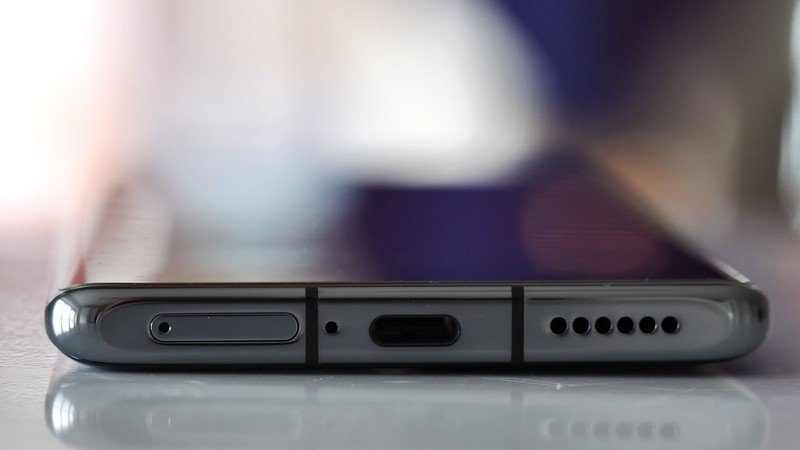
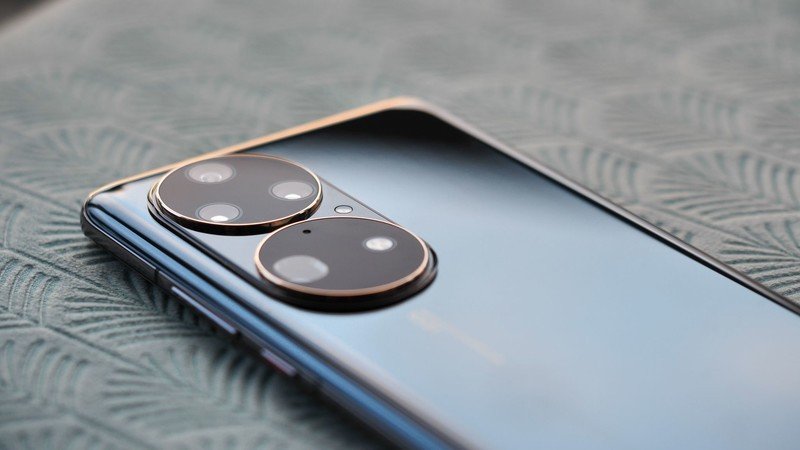
The P50 Pro's unique double camera ring demonstrates its photographic focus.
Around the back is where you'll really see what sets this phone apart, with its unique double camera ring design and Leica branding. In the black color variant I've been using, the back panel is a little dull-looking — at least compared to the more ostentatious gold and pink options that are available. But still, those twin camera bumps very clearly convey the message that this phone is all about photography.
The main attraction in that regard is a gigantic 50-megapixel main sensor that's paired with an additional 40-megapixel monochrome camera to capture extra fine detail. There's also a 13-megapixel ultrawide and 64-megapixel telephoto — a folded periscope lens with a 3.5X zoom level.
Huawei was one of the first brands to do periscope telephoto with 5X lenses in the P30 Pro and P40 Pro — as well as pioneering even higher zoom levels with the P40 Pro Plus — so the move back to 3.5X is a little perplexing. But the telephoto's higher resolution is designed to compensate for that, letting you zoom in further before hitting the limit of the sensor.
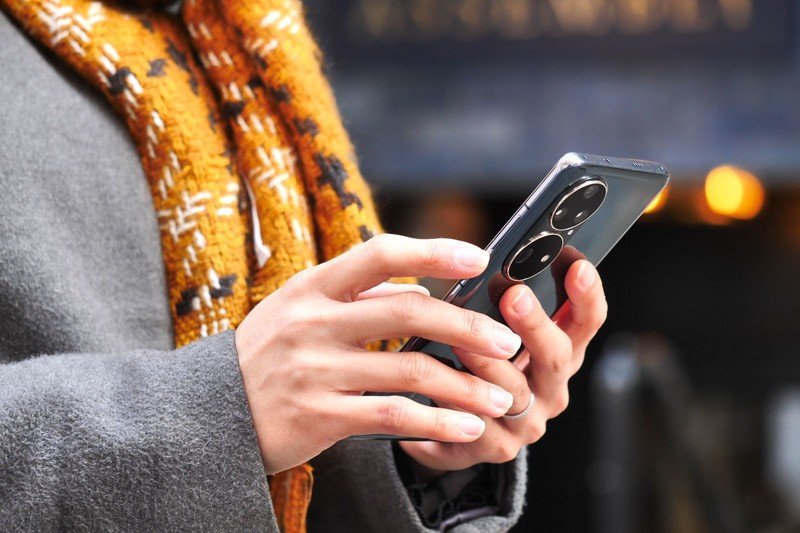
Huawei's legacy of excellent dynamic range and low-light performance continues.
This camera system continues the Huawei legacy of excellent dynamic range and low-light performance, especially with its main shooter. Even in very challenging backlit situations, this main camera captures a ton of detail, producing 12.5-megapixel shots from the 50-megapixel sensor. The 13-megapixel ultrawide also holds its own, offering a more unique field of view with similarly great dynamic range — though with reduced low-light performance. For the most part, however, these cameras hold their own against the Google Pixel 6 Pro, which is one of the best Android cameras out there right now.
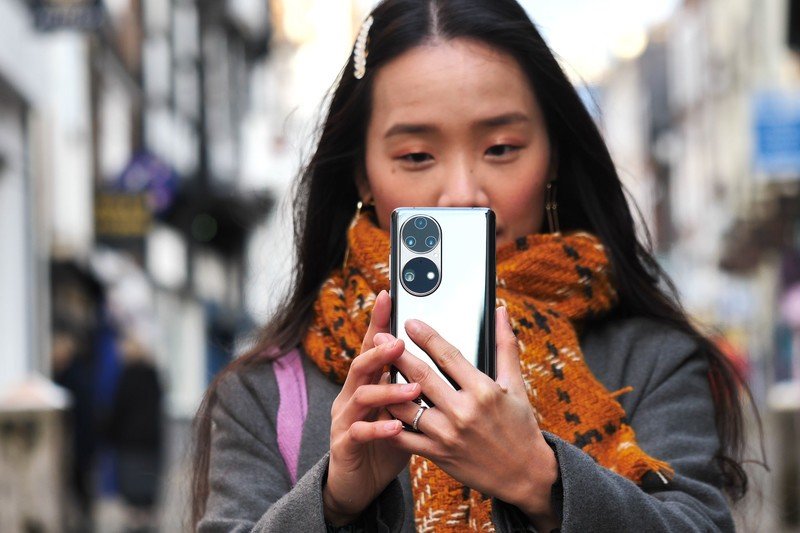
I've also been super impressed by the selfie camera, a 13-megapixel unit with a 100-degree field of view. The front facer defaults to a "middle" zoom level of 0.8X at first, and lets you zoom in or out to choose either a "standard" 1X selfie shot or a much wider 100-degree capture. At that maximum "wideless" level of 0.6X, the P50 Pro gives your selfies a really dramatic perspective. And thankfully, the same excellent dynamic range applies to front-facing shots too.
The telephoto is where things get a bit more interesting. Its 3.5X zoom level is lower than its predecessors, but is arguably more useful when combined with the digital zoom potential you get from a high-res 64-megapixel sensor.
Like the Pixel 6 Pro, your useful hybrid zoom range goes up to around 10X — though it's worth saying that Huawei's 10X gives you a tighter shot than the Google camera — Huawei's 10X is equivalent to around 11 or 12X on the Pixel, so it's not exactly an apples-to-apples comparison. The amount of sharp, fine detail you can still capture at 10X is impressive, in some situations slightly outperforming the Pixel. But I also noticed the P50 Pro's telephoto being more susceptible to fine detail being smushed out because of hand motion — Google's stabilization seems to do a better job here.
And in low light, I've been seriously impressed by the main camera's capabilities, even outside of the dedicated night mode.

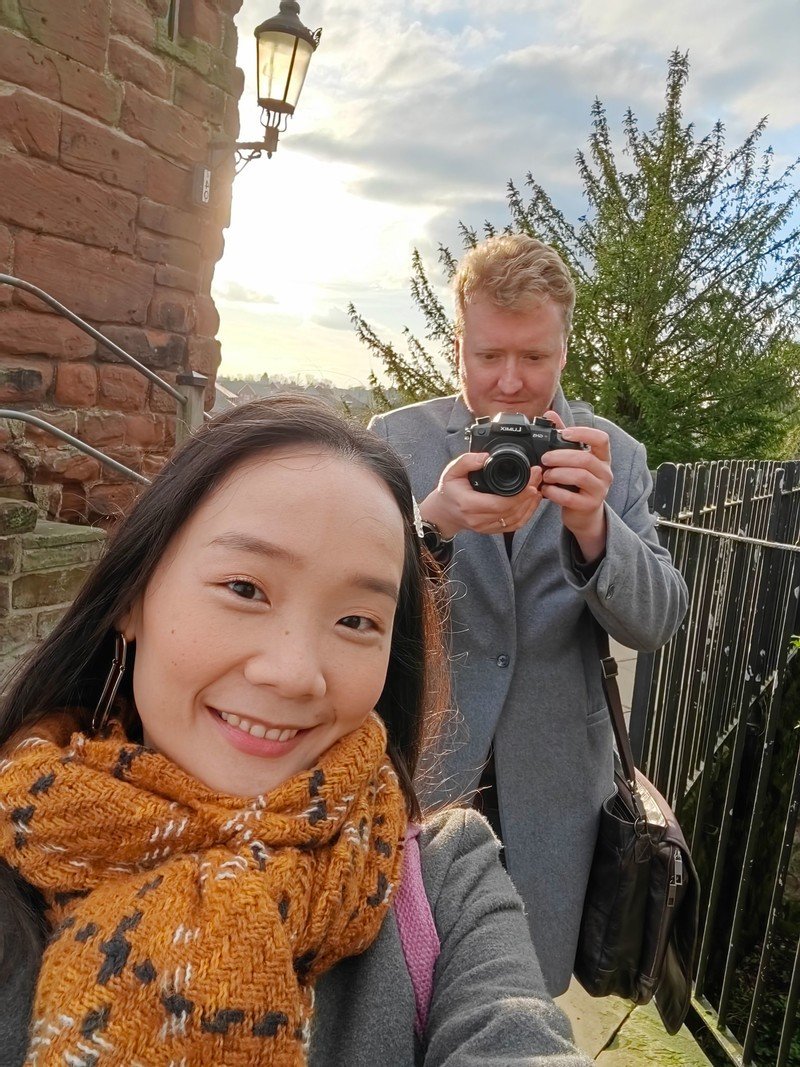



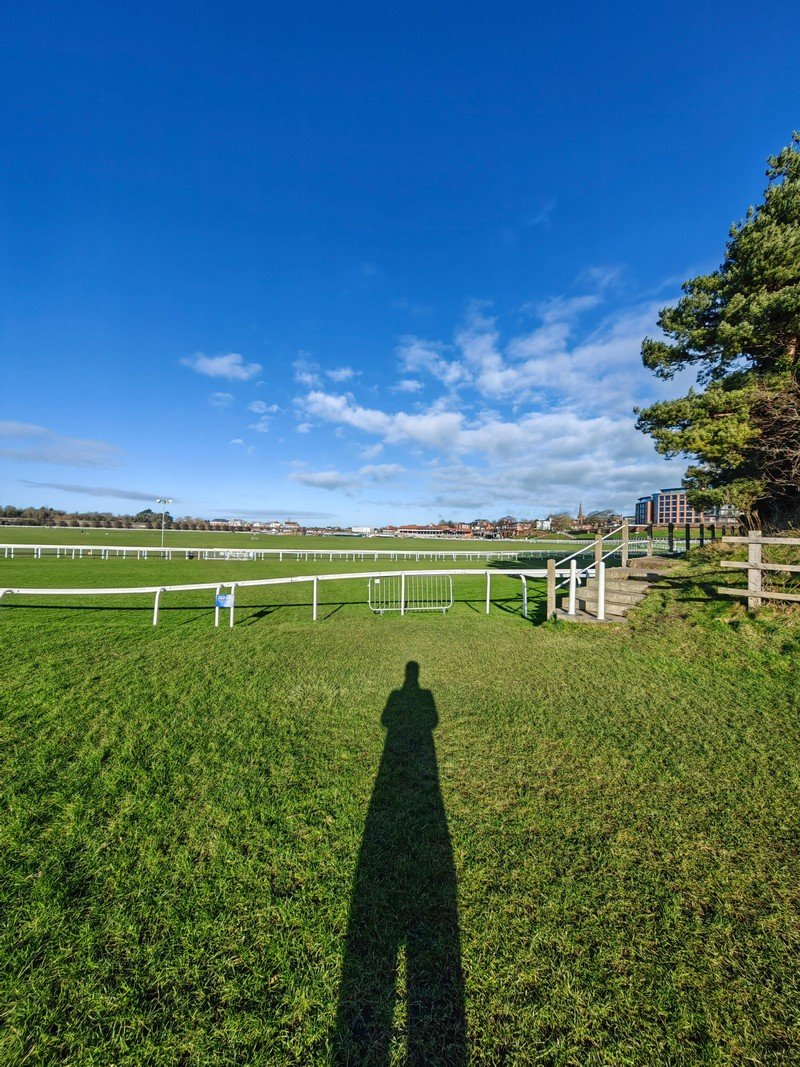

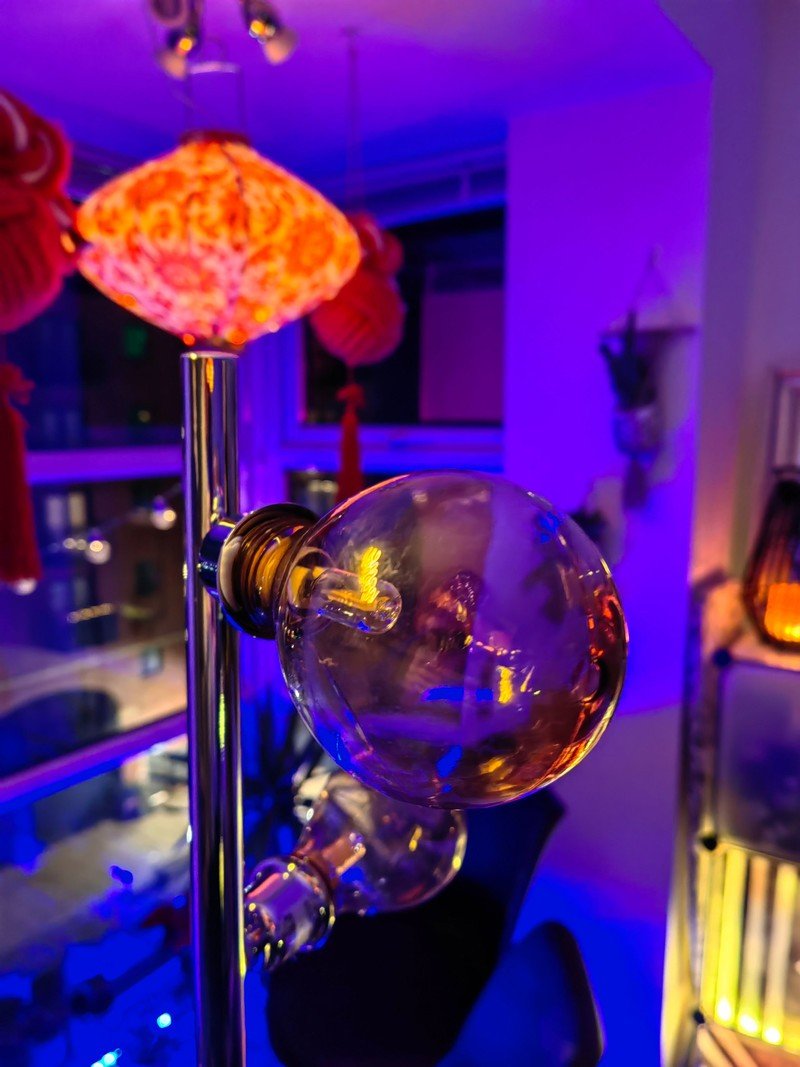
This is a very competent camera setup overall, and that extends to video, where the P50 Pro's main and ultrawide cameras have some of the best stabilization I've seen. It's easily able to smooth out the motion from a brisk walk, and even holding this camera while running, the footage was smoother than it had any right to be.
As for telephoto video, you soon start to see the limitations of that 3.5X camera, especially in terms of stabilizations. When you push it to 10X, it's noticeably shakier than Android rivals like the Galaxy S21 Ultra.
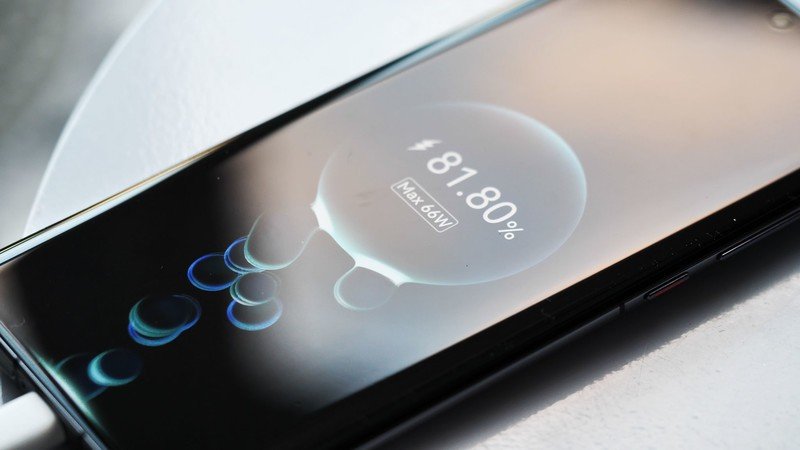
Of course Huawei can still make a great phone camera, but what about the rest of the hardware equation? Performance-wise, I haven't noticed anything lacking in the Snapdragon 888 4G — outside of the one really obvious thing we'll get to later. This is the same chipset powering most 2021 Android flagships, after all, only without 5G radios. And it's paired with an ample 8GB of RAM and 256GB of storage in the model we've been using.
Huawei squeezes a lot of life out of a smaller battery.
On the software side, Huawei continues to forge its own path, with EMUI 12 (based on Android 11) powering the P50 Pro. Technically this isn't quite the same HarmonyOS software used by the company's phones in China, but many of the same features carry over. For example, the home screen experience is heavily iOS-influenced, from the visuals to folder layouts and quick settings.
There's also a robust multitasking feature similar to what you might find on an iPad. Swipe inwards from the edge of the screen and hold, and you'll activate the multitasking bar, allowing you to place apps into windowed mode. Plus if you own other Huawei gear like a PC or smart monitor, the P50 Pro benefits from multi-screen collaboration mode — controlling your phone via a window on your PC — and instant pairing over NFC.
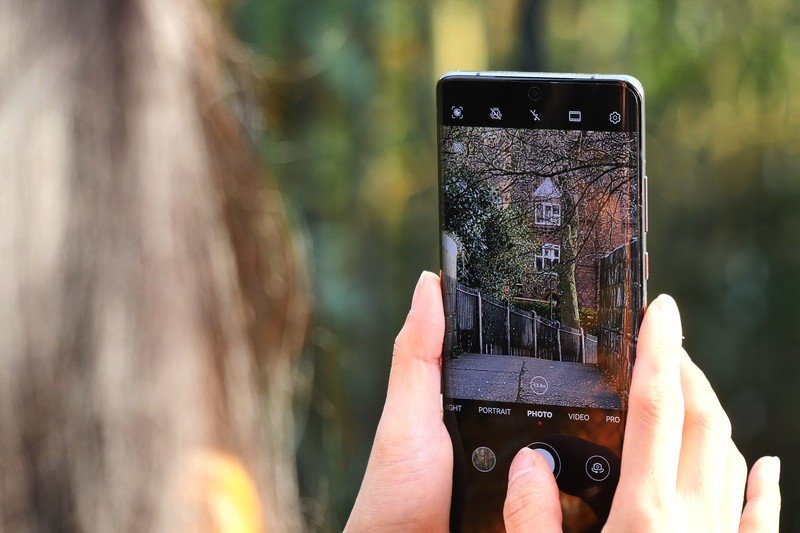
Another benefit of Huawei doing its own thing in terms of software is that it can squeeze a lot more life out of a relatively svelte battery. The P50 Pro's 4,360mAh cell seems small on paper, but in a few days of use I've been pretty impressed with the level of longevity it's given me. You probably won't get multiple days out of this device, but a full day is no problem whatsoever. Plus when it does come time to recharge, the super-quick 66W supercharging brick can quickly get you out of the danger zone.
If you buy Huawei's proprietary wireless charger, you'll also get wireless refills at up to 50W — among the fastest out there.
Huawei P50 Pro: What you won't like
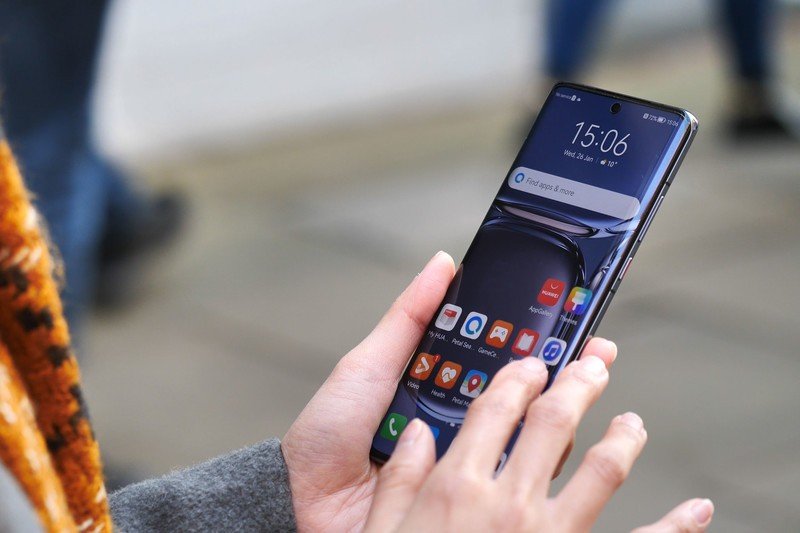
While the P50 Pro is a phenomenal little photo-taking machine, it does present some image processing quirks in places, most noticeably in darker conditions.
Granted, the dedicated night mode is overkill for this camera in many situations to begin with — in most scenes you'll get more natural-looking snaps using full auto mode. Rely on night mode and you'll notice excessively saturated colors in moderately dark scenes, sometimes giving pictures an unnatural look. This was something I noticed across all three of the phone's rear cameras in sunrise or sunsets, where it's clear the phone cranks up the saturation and vibrance much more than other models. The Google Pixel 6, for instance, produces colors that are far closer to what your eye actually sees in the same situation.
If you you use a lot of Google services, this phone's probably not for you.
Software has been the Achilles heel of many a Huawei phone, especially since the firm was shut off from access to Google-certified Android. As a result, over the past year or so Huawei has built out even more functionality, including NFC payments and its own Petal Maps solution.
But although progress has been made building out Huawei's own ecosystem and making the functionality gaps less obvious, the lack of Google Mobile Services remains a big issue.
EMUI 12 is based on Android 11, so most Android apps will work just fine. But the experience of installing and using many common apps is still clunkier than on a comparable Google Android phone.
If an app isn't present on Huawei's AppGallery platform, you'll need to use the Petal Search app to track it down. Getting apps from Petal is a lot less of a hassle than it used to be, but the process of updating them still involves a lot of back-and-forth.
What's more, because there's no Google Play Services underpinning Huawei's flavor of Android some app functionality might not work 100% of the time. Case in point: Slack works just fine, but its notifications use Google's Firebase system, so they won't show up on a Huawei phone. Twitter notifications are also less informative on a Huawei device, likely because of the same issue.
Ultimately, for someone like me who relies on Google services and apps that use things like Firebase, using HarmonyOS and EMUI is still kind of a headache. It's tough to recommend this software experience to anyone who has any kind of Google presence in their digital life.
Huawei P50 Pro: The competition
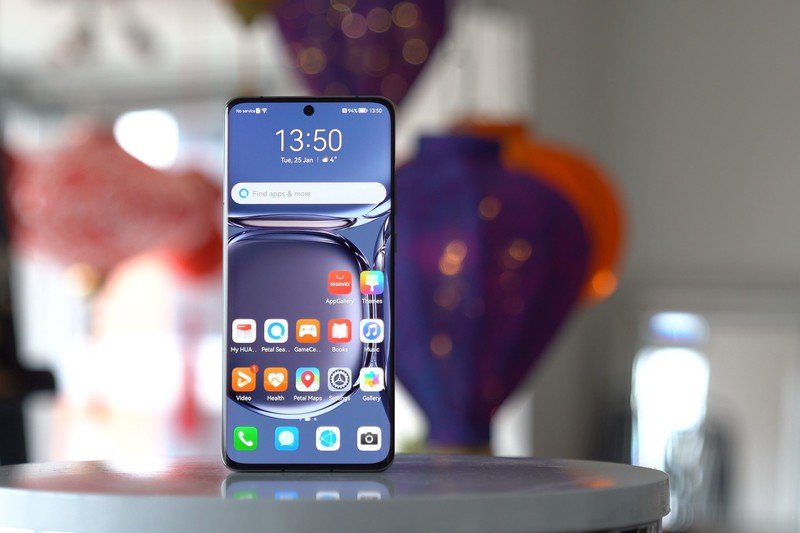
With its €1,199 price tag, the Huawei P50 Pro is in competition with the very best Android phones on the market, to say nothing of Apple's iPhone. This is tip-top premium smartphone pricing.
Google and Samsung offer a bigger bang for your buck.
Take the newly-launched Samsung Galaxy S22 Ultra, for instance. It's just €50 more than the P50 Pro and offers a more up-to-date processor with 5G capabilities, a bigger battery, more versatile camera setup — though somewhat slower charging. On the face of it, there's no contest between these two around the €1200 mark.
Elsewhere, Google's Pixel 6 Pro offers similar capabilities for far less cash. In Europe, the top-end Pixel costs €899 for the base 12GB RAM + 128GB storage mode, or €999 for 12GB + 256GB. That's €200-300 less than what Huawei's asking for the P50.
What's more, both Google and Samsung flagships come without the additional headaches caused by the lack of Google services on current Huawei phones.
Huawei P50 Pro: Should you buy it?
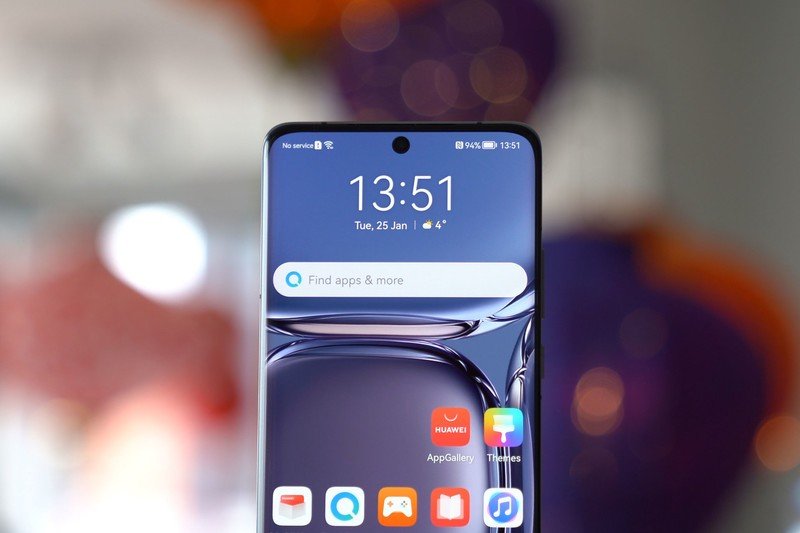
You should buy this if...
- You've already bought into the Huawei ecosystem
- You want an excellent phone camera system
- You don't care about 5G
You shouldn't buy this if...
- You care about having the fastest data speeds
- You use a lot of Google services
- You want the best specs possible for your €1,200
On the face of it, the Huawei P50 Pro is a pretty well-rounded premium smartphone.
The P50's priced perilously close to the S22 Ultra in Europe.
But look closer and several unfortunate compromises come into focus — and while not all of them are Huawei's fault, they do hurt the long term value proposition of this phone.
The lack of 5G is something that'll probably catch up with the P50 Pro in a couple of years and make it feel quite dated. And if you were expecting all the pain points caused by the lack of Google on Huawei phones to be fixed — well, progress has been made building out Huawei's own ecosystem, but I've still missed the many Google conveniences that you get with a phone like Pixel.
3.5 out of 5
The biggest red flag, though, is the price. The P50 Pro retails for €1,199 in the eurozone, which is perilously close to the starting price for the upcoming Galaxy S22 Ultra. And this phone has last year's processor and no 5G. Even in terms of tech, it's outmatched by many cheaper Android flagships like the Pixel.
So while the P50 Pro has a lot of great hardware, and is an excellent little photo and video-taking machine, the high price and software quirks compared to a standard Android phone make its high price hard to swallow.
That's not to say there isn't a place for the Huawei P50 Pro. But right now this is a phone in desperate need of a discount. Considering the hardware on offer, and the compromises involved in buying a 4G-only handset in 2022, it could make sense with a few hundred Euros taken off its price.
At close to €1,200, though, it's a very tough sell.
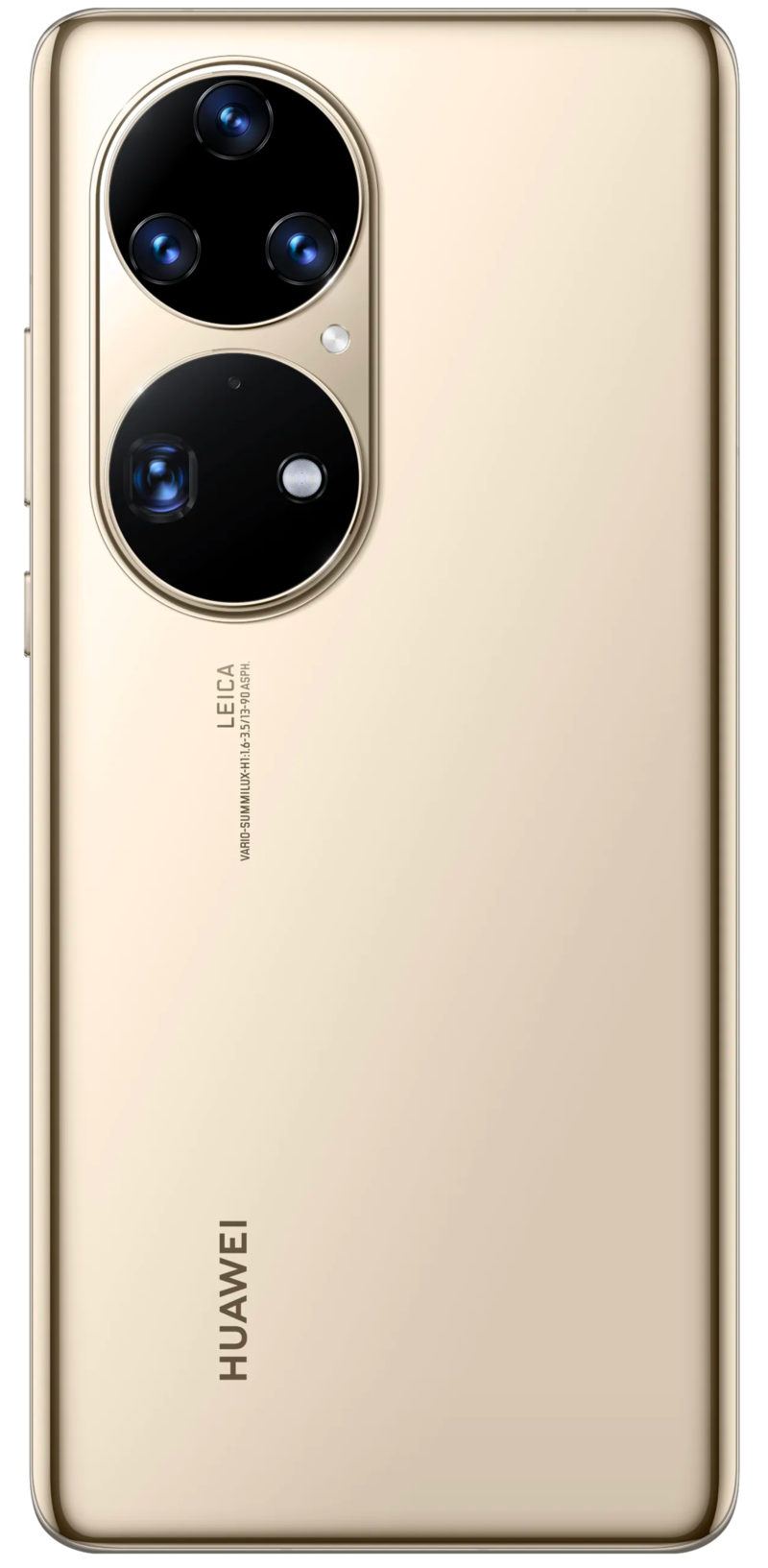
Huawei P50 Pro
Bottom line: The Huawei P50 Pro is a good-looking, performant phone with some fantastic photographic capabilities. But once again, outside influences make this phone a less compelling buy than it otherwise would have been, with software challenges for users of Google services, and an outdated SoC for the price.

Alex was with Android Central for over a decade, producing written and video content for the site, and served as global Executive Editor from 2016 to 2022.
